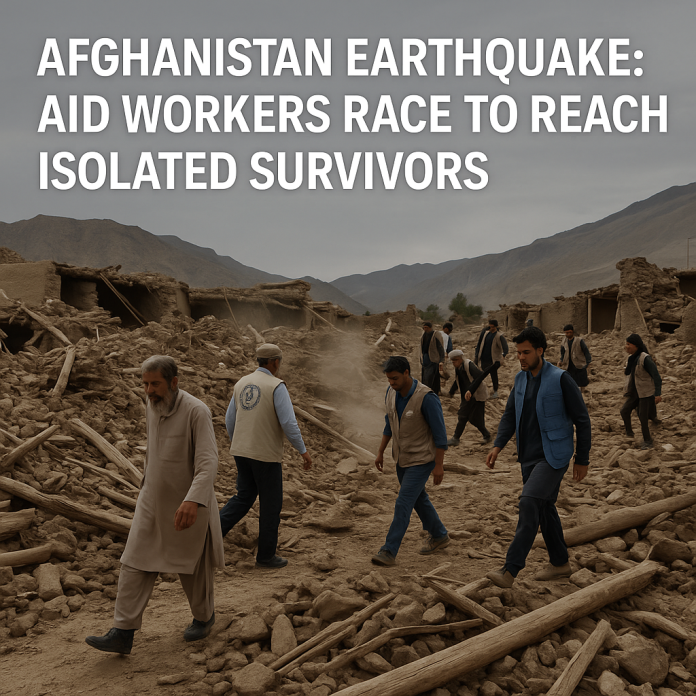Afghanistan Earthquake: Aid Workers Race to Reach Isolated Survivors
2 September 2025 | Humanitarian Aid
A magnitude-6 earthquake struck eastern Afghanistan overnight, leaving a trail of destruction across remote mountainous regions. More than 800 people have died, and over 2,000 are injured, though officials warn the overall impact could affect hundreds of thousands.
The quake collapsed structures made of mud and timber, with roofs often falling on sleeping occupants. These materials, common in rural homes, contributed to high casualties.
Access Challenges and Rescue Efforts
Rescue operations are being hampered by damaged roads, landslides, and rockfalls. Many communities remain cut off due to prior rainfall-induced obstruction.
To scale up relief efforts, 20 emergency assessment teams and 15 mobile units have been deployed. The UN Humanitarian Air Service has increased flights between Kabul and Jalalabad to deliver aid and personnel.
Communication networks have collapsed in affected areas, complicating coordination. Humanitarian staff are relying on helicopters and overland routes to reach remote villages. Evacuating casualties requires long, arduous journeys.
Urgent Health Risks
Public health emergencies are mounting. UN officials emphasize the need for immediate disposal of bodies and dead livestock to prevent outbreaks of waterborne diseases. In addition, psychological support is being prioritized to help survivors cope with trauma.
The Afghan Red Crescent is among the first responders, navigating hazardous terrain where roads are blocked. Their teams walk up to five hours to reach remote communities and transport the wounded back to overwhelmed hospitals.
Critical Humanitarian Needs
Displaced families urgently need tents, blankets, and tarpaulins to protect them from harsh mountain weather. Emergency nutrition, warm meals, and trauma care are in demand, though mobile health teams are in short supply, raising concerns about meeting basic needs.
A Humanitarian System Under Strain
Afghanistan faces chronic humanitarian challenges: 22.5 million people—half the population—need assistance. Food insecurity has surged due to drought, and cuts in aid have forced many services to shut down.
Adding to the strain, 2.4 million Afghans are returning from Pakistan and Iran, many forcibly deported. Most are returning to the quake-affected zones. These forced returnees are arriving with minimal resources, further overwhelming local capacity.
The 2025 humanitarian appeal for Afghanistan is only 28% funded—a shortfall that poses an urgent threat amid overlapping crises.




